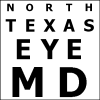Stroke
A stroke is a life-threatening emergency in which the blood supply to the brain is interrupted or severely reduced, depriving it of oxygen and killing brain cells. Quick treatment could save your life and minimize damage to your brain.
Major causes of stroke include:
- High blood pressure
- High cholesterol
- Diabetes
- Cardiovascular disease
- Obesity
- Smoking
Symptoms of stroke include:
- Numbness, weakness, or paralysis of your face, arms, or legs—usually on one side of the body
- Pain between the eyes
- Blurred vision, double vision, or decreased vision
- Dizziness, loss of balance, or loss of coordination
- Severe headache, stiff neck, or facial pain
- Difficulty speaking or understanding speech
- Confusion or problems with memory, spatial orientation, or perception
- Nausea and vomiting
If you are experiencing these symptoms, seek immediate medical attention. Receiving treatment within three hours of suffering a stroke is shown to dramatically improve your chances of a successful recovery. A stroke which lasts less than 24 hours is called a transient ischemic attack (TIA).
There is no treatment for patients who have lost vision due to a stroke. However, you may regain some of the peripheral vision lost from a stroke. Your ophthalmologist (Eye M.D.) will give you a thorough eye examination to determine how the stroke has affected your vision. He or she will talk to you about what to expect over time and can help you find resources and training to make the most of your remaining vision.
